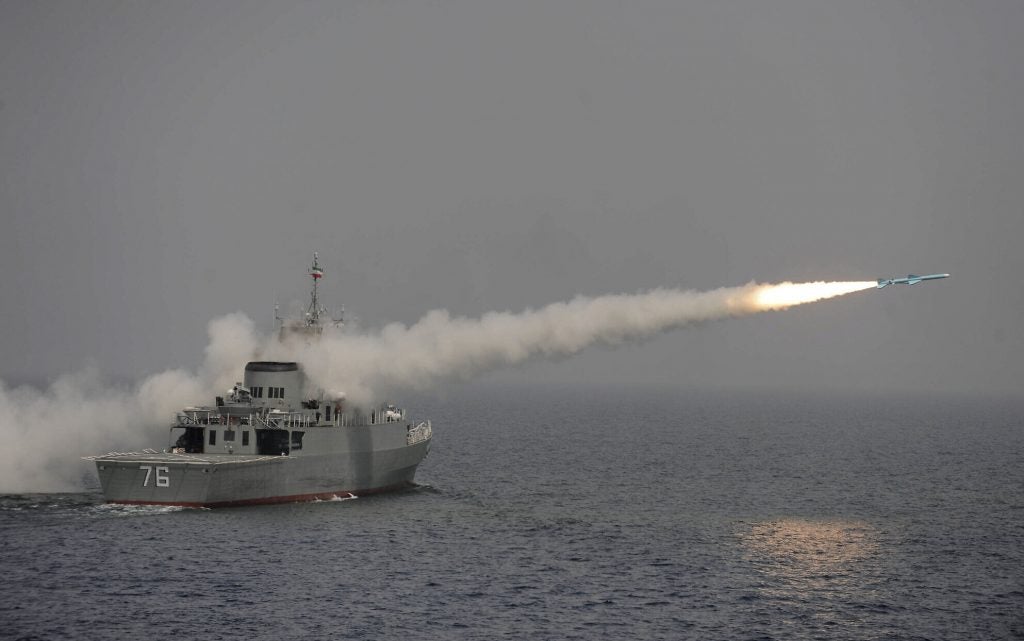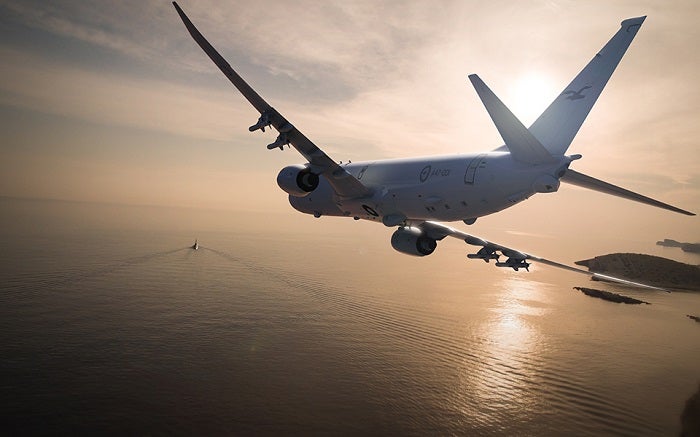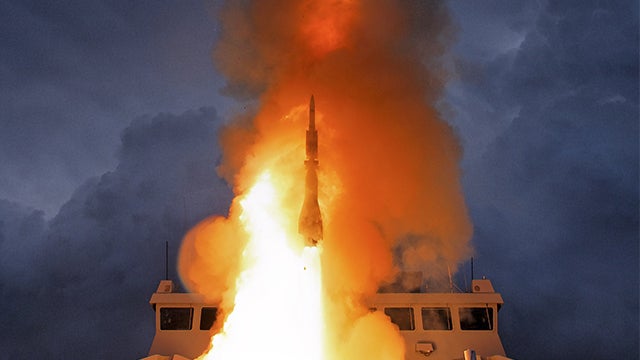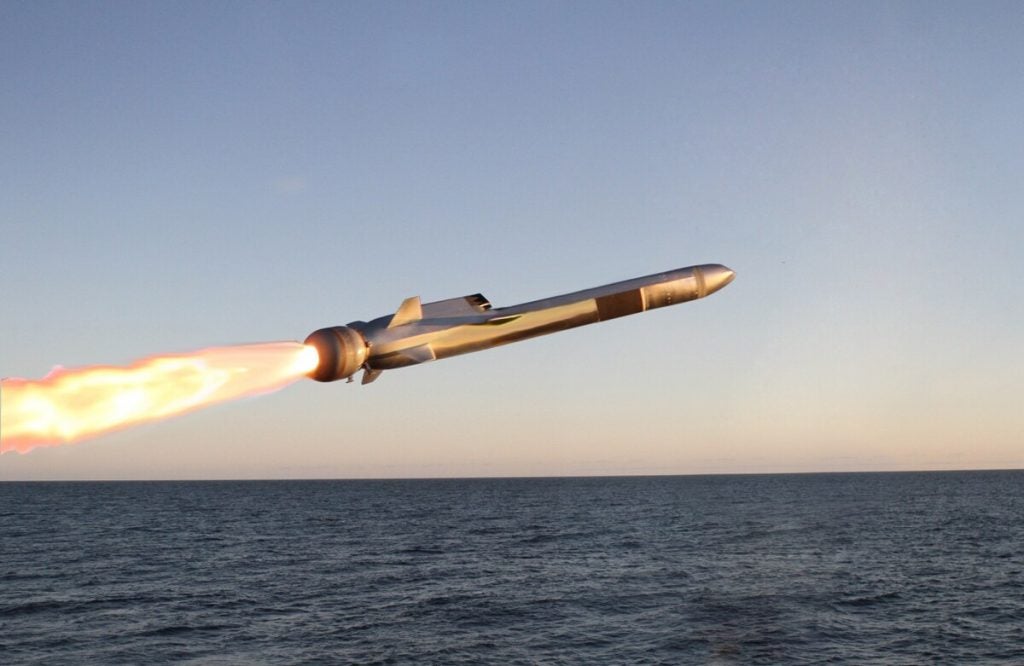A Short Guide to Naval Missiles
There are three primary missile types encountered in the naval battle-space, but a great deal of jargon and technical terminology surrounds them which can make it difficult for the novice to familiarize themselves with the subject. In this article, we will attempt to give a brief and accessible introduction to the types of missiles one might expect to encounter in the literature surrounding naval conflicts since the Second World War.
Surface to Surface Missiles

(AP Photo/IIPA, Ebrahim Norouzi)
Surface to surface missiles (SSMs) in the naval battle-space are almost always also dedicated anti-ship missiles (AShMs), though there are some distinct exceptions. There are a lot of ways to slice this metaphorical pie, and everyone will have a preferred method, but here are some distinctions that are frequently made:
- Cruise Missiles vs. Ballistic Missiles: Cruise missiles generally follow a similar flight profile to that of an airplane, though with a much more abrupt landing (probably the most famous example of the type is the American U/RGM-109 Tomahawk series). Ballistic missiles launch vertically on a high, arcing profile and come at their target on a falling or ballistic trajectory. The easy shorthand is that the engines on cruise missiles usually operate for most or all of its flight time while a ballistic missile only fires its engines while going up.
- Rocket Powered vs. Jet Engine Powered: Anti-ship missiles need to get to their target, and they need to get there without the launching platform being destroyed first. This requires range and speed, and the best way to achieve that is with a high thrust engine. Rocket powered missiles will tend to either be fueled by solid or liquid propellant. Solid propellant usually means a smaller, shorter ranged missile since the fuel will burn faster and cannot be throttled or adjusted midway through its flight (the French AM-38 and -39 Exocet are a good example of this propulsion method). Liquid fueled missiles are usually larger, longer ranged, and faster. Some missiles with liquid fueled rocket or jet engines will have solid rocket boosters to launch them off a ship or out of the water, which then falls off when the main engine starts (Soviet, now Russian examples such as the SS-N-2 Styx are a good example of liquid fueled rocket propulsion). Finally, jet powered missiles will usually have the longest range since they are the most fuel efficient, but cannot usually match the speed of rocket powered missiles (the American Harpoon family of missiles is a very famous and easily recognized example of this type).
- Radar Homing vs. Optical Homing: Missiles need to “see” their targets to hit them. The most common way to do this is through a small radar seeker in the nose of the missile that can detect the ships against the relatively flat background of the ocean. Because this technique is so common, most ships carry defensive systems specifically designed to beat radar seekers. The other primary method is infrared or electro-optical (EO/IR) homing. Usually used as a backup in case the radar seeker cannot find the target, EO/IR seekers actually look at the target and use various methods to determine the ship from the sea.
- Oddballs: Some SSMs that can be used against ships are not dedicated anti-ship missiles. Most dramatically, this includes various nations’ plans to use nuclear armed ballistic missiles against enemy fleets. Without the guidance methods to hit ships precisely, they would be trying to aim where they thought the fleet would be when the missile arrived, like leading a target with a rifle. In the case of this use, it was hoped that the overwhelming power of the nuclear detonation would make up for any errors in aiming. Thankfully this has never occurred.
Air to Surface Missiles
Air to surface missiles (ASMs), are a general class of powered, guided, air-launched weapons designed to find and destroy targets on the ground. In the naval battlespace, ASMs are commonly also AShMs, but again, not always. Some air launched weaponry can strike targets on land and sea due to how it is guided to the target, or is explicitly designed to do both. However, dedicated AShMs have also been designed for launched from fighter and bomber aircraft. Finally, some missiles can be launched from aircraft or ships, or even submarines.

- Dedicated AShMs: Most countries only invest in a relatively small quantity of air-launched AShMs, because they tend to be expensive to buy, maintain, and train with. Everything about dedicated AShMs is more expensive, from the seeker head, to the engine, to the specialized computers. Most of these are not transferable to other weapons systems and therefore drive prices up significantly. These missiles tend to be smaller than ship or shore launched options, because they need to be carried by aircraft, which are notoriously weight limited. Seeker types are basically the same as their larger counterparts, though they may be limited in capability due to size limitations. Finally, dedicated air launched AShMs tend to bias more towards sensors and warheads than fuel and engine in their design, because the aircraft will carry the missile most of the way to the target. (Well known examples include the AGM-84 Harpoon, French Exocet family, Russian SS-N-22 Sunburn, and Japanese ASM-2.)
- ASMs that can also target ships: Many modern air to ground missiles have sufficiently sophisticated seekers that they can also pick out and engage ships at sea if needs be. Historically, this meant EO/IR or laser guided missiles (or even bombs), because radar seekers were difficult to produce economically enough to use against tanks, trucks, and other land targets, while EO/IR seekers could be made for much less. This has changed, as modern advanced radar seekers fitted to small missiles can find targets on land or sea, and for a price that makes it possible for their widespread usage. (The AGM-62 Walleye, AGM-12 Bullpup, and Russian Kh-23/66 are older examples of this, while the AGM-65 Maverick, British Brimstone, or Russian Kh-38 are more modern examples. Most anti-radar missiles can be used against ships as well as land targets.)
- Bombs, Rockets and Other Options: If an aircraft can get within range of a opponent ship without being destroyed, bombs—both guided and unguided—are as good at destroying ships in 2020 as they were in 1942, if not much better. Similarly, unguided rockets, some of the cheapest aerial weapons available, will punch the same holes and start the same fires that bombs will. While relatively small diameter rockets are more common in the west, most countries have access to large caliber (5in or greater) aerial rockets which will do significant damage to ships, if they hit. Finally, air-dropped torpedoes, which these days are only used against submarines, were for many years considered a valid, if not key, anti-ship weapon. The USSR developed rocket powered anti-ship torpedoes for its naval bombers in the 1950s, but this was the last gasp of a concept that has died off in the face of the AShM. (The US has used GBU-12 laser guided bombs and Mk.20 Rockeye cluster bombs operationally against enemy ships, while multiple ships have come under attack from unguided rockets or aircraft cannon.)
Surface to Air Missiles
Surface to Air missiles (SAMs), are the primary tool used by ships to defend themselves against the great variety of threats arrayed against them. Naval SAMs have developed a great deal since the USN started developing the concept in the late 1940s. Early versions were big, bulky, and not terribly maneuverable or accurate. This has changed significantly and being in range of a ship with modern SAMs onboard is not a very survivable position for combat aircraft today. They are universally solid fueled, and burn their fuel in the first few seconds of flight.

- Short range or self defense SAMs: These will be the last line of defense against incoming threats, and modern examples can often switch from inactive to in-the-air very, very quickly. They tend to be very nimble and very accurate at the cost of being short ranged and pricey. However, the expenditure of a million dollar missile to save a billion dollar ship is a pretty easy calculus for any navy. (The USN’s RIM-162 ESSM, European Aster 15, and Russian 3K95 “Kinzhal” navalized Tor missile are all good examples of this type.)
- Medium range SAMs: These are, likely, what most people think of when they think about naval SAMs. These are going to be the most common options and the ones shot off during exercises that cameras get a good look at. A balanced mix of range, speed, and lethality, they need to get out to their target with enough speed left to still counter any defensive maneuvers it may make. They also need to be accurate enough to detect the enemy at range and hit it. While this drives up the cost, they are usually bought in the greatest volume, which helps matters somewhat. (This type is really exemplified by the USN’s SM-1 and SM-2, though the SM-1 is no longer in common service. Other examples are Aster 30 and S-300F in service with non-US supplied navies.)
- Long range SAMs: Used for very high value targets, or very dangerous ones, these are used when the threat needs to be destroyed before it can even launch its own weapons. In recent years, they have been tailored for destroying incoming ballistic or hypersonic weapons, though the success rate for these is low due to the great difficulty in doing so. Generally very large, very expensive, and bought in low numbers, only a few rich western nations will shoot these off for the cameras or for training with any regularity. They are, however, very popular in the discourse as the ultimate form of missile defense. (The USN’s SM-6 is the real show-stopper here, with no true equal in the world today. The SM-3 is a dedicated anti-ballistic missile interceptor, and the Aster 30 reportedly has ABM capability.)
This has been a very surface level introduction into the world of naval missiles. It is not designed as a particular guide or expose, but hopefully for those feeling lost in the sea of jargon and industry-speak, it will help demystify what can be a significant barrier to entry. Go ahead and check out the embedded links for more in-depth pieces on the tactical-technical challenges of the modern naval battlespace and for the newcomer, don’t get discouraged! Its a big subject, but taken one bite at a time, its totally manageable and understandable.

